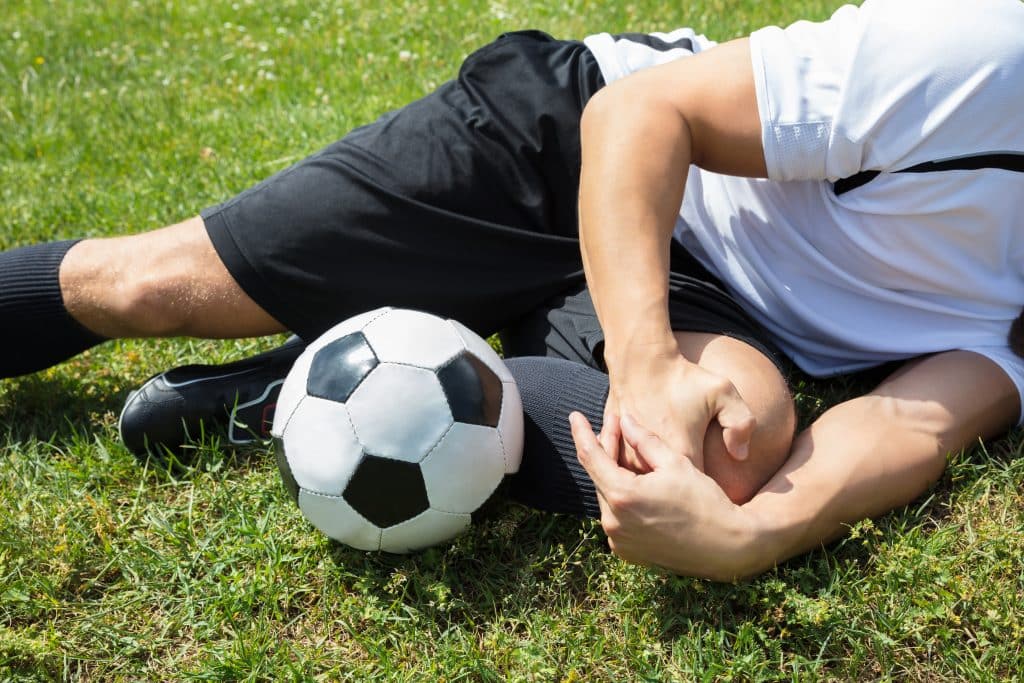How To Avoid Sports Injuries
Consistency is the key to achieving just about any goal, including athletic goals. Because being active is an essential part of overall good health, it’s important to know how to avoid sports injuries.

To avoid sports injuries:
- Focus on flexibility
- Build a strong foundation
- Remember mechanics
- Rotate stations
- Perform proper maintenance
- Use the right gear
- Learn to rest
1. Focus on Flexibility
It’s hard to fit everything into our schedules. In our hurry to get it all done, stretching becomes easy to deprioritize. It’s also a topic continually under debate — as the relationship between stretching and injuries is nuanced. However, for those performing high-intensity exercises that involve bouncing or jumping (like soccer, basketball, and football), increasing muscle and tendon flexibility decreases injuries like hamstring strains and enhances performance. While stretching has not been proven to be as integral in lower-intensity activities (such as jogging, swimming, and biking), most people with a regular stretching routine appreciate how the practice makes them feel, which has its own long-term value.
2. Build a Strong Foundation
Core strength (strength in the abs, back, and pelvis) is a common topic in sports literature. According to the Mayo Clinic, “Strong core muscles make it easier to do many physical activities.” When you strengthen your core muscles, you improve their ability to work together. This makes all your movements more coordinated and skillful, which decreases your risk for injury-causing accidents.
3. Remember Mechanics
Consider every person you know who’s hurt their back. Chances are pretty good their how-it-happened story starts with, “All I did was…”. Repetitive movements, especially those done with poor form or bad posture, cause strain on our bodies that builds up over time. Whether in our ankles, knees, back, wrists, or any other body part, using proper form can make injuries less likely. Sports medicine doctors are excellent resources for helping you correct mechanical issues and thus avoid repetitive stress injuries.

4. Rotate Stations
Using the same muscles the same way over time is part of improving performance, but it can also cause wear and tear that leads to injuries. Talk to your orthopedic specialist about developing a routine that helps you achieve your fitness goals without increasing your risk of injury.
5. Perform Proper Maintenance
They may be less obvious than other injury-prevention methods, but hydration and nutrition are absolutely vital for avoiding injury. Protein is well-known for its ability to help with muscular recovery, but your body needs a whole host of nutrients to be at its best. The list of necessary nutrients is long, but it includes omega fatty acids, magnesium, and B vitamins. Talk to your orthopedic specialist about dietary requirements and food and supplement choices for strong bones, proper inflammation levels, and adequate energy.
6. Use the Right Gear
When you think of gear, you likely primarily consider the right shoes or proper protective clothing. While those things are certainly integral to injury prevention, remember that the gear used in your rest time matters too. Keep a foam roller or tennis ball on hand for easy and frequent stretching (especially if you engage in high-intensity sports), sit in a supportive chair at a proper ergonomic workstation, and use proper equipment when performing tasks around the house.
7. Learn to Rest

If you’re an athlete who truly loves your sport, letting yourself rest can be a form of pain in and of itself. Remember that many mild injuries are responsive to RICE: rest, ice, elevation, and compression. If your body is giving you clues that something more is going on than post-training soreness and fatigue, pushing past a budding injury will only make it worse. In the long run, a few days of RICE are a relatively small price to pay for avoiding an injury that could sideline an entire season.
When to See a Sports Medicine Doctor
Continuing to play through knee pain, elbow pain, hip pain, or any other type of pain can make things worse. We don’t always know how seriously we’re hurt, especially during an adrenaline-filled event. If you have ongoing pain or tightness that is not relieved with rest or stretching, it’s important to see your sports medicine doctor. If you cannot use your body as normal, such as being unable to put your full weight on your leg or lift your water bottle to your mouth, it’s worth making an appointment to be seen. If you’ve hit your head, you may have a serious injury whose symptoms are not totally obvious right away. When it comes to injuries, the old adage applies: “Better safe than sorry.”
How Common Are Sports Injuries?
Chances are pretty good you’ve had or will have more than one sports injury. If you have kids, they will, too. Healing takes time and costs money. It’s also frustrating and can disrupt budding motivation. To avoid sports injuries, monitor the line between encouraging improvement and playing past the point of health and safety.
If you have questions about avoiding sports injuries or treating an existing injury, please contact us or comment below.
1 Comment
Permalink
I really enjoyed this blog post. It provides a lot of useful information on how to avoid sports injuries. I especially like the emphasis on flexibility and proper mechanics. The tips for maintaining flexibility are especially helpful, as I have had a lot of problems with hamstring injuries in the past. I also like the advice on proper mechanics, as I have been guilty of using improper technique in the past, which has resulted in injuries. This blog post has given me a lot of good advice that I can put into practice to help me avoid future injuries.